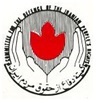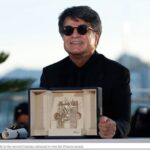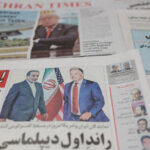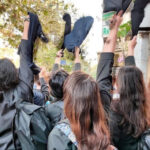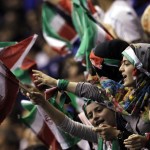
Roya Heshmati has stated that she had been lashed 74 times because of a social media post she made in April in which she could be seen without a hijab.
The lashes to Roya Heshmati’s body have triggered renewed condemnation of Iran’s harsh punishments against women for alleged crimes against “morality.”
But the official reason for carrying out the flogging is also being questioned, while the 33-year-old Kurdish-Iranian woman now faces the double jeopardy of having to defend herself against smears to her name.
Heshmati announced on Facebook last week that she had been lashed 74 times because of a social media post she made in April in which she could be seen without a hijab.
The incriminating post featured a photo from afar of her dressed in a red shirt and black skirt — an outfit that in much of the world would be considered conservative — walking down a popular Tehran street with her back to the camera.
The post led to Heshmati’s arrest and 11-day detention for appearing in public without her head scarf. Later she was charged with propaganda against the establishment, violating public decency and order, and disseminating immoral social media content.
While she was initially sentenced to 13 years in prison on those charges, the sentence was ultimately reduced upon appeal to a one-year suspended sentence, a three-year ban on leaving the country, a fine of about $25, and 74 lashes on her back.
This week, she was finally summoned to appear at a district prosecutor’s office in the Iranian capital, where her beating was administered on January 3. Afterward, the Tehran resident and native of Sanandaj — the second-largest city in the western Kurdistan Province — described the experience in detail on Facebook.
Heshmati wrote in the account of her punishment that she steadfastly refused to wear a hijab, despite threats by the man carrying out the flogging to initiate a new case against her for violating the hijab law.
Eventually, she said, her hands were cuffed behind her back, preventing her from removing the head scarf placed over her head by female court officers.
Heshmati was then led to a room she described as a “medieval torture chamber” where she was lashed in front of a judge by one of the many whips on display.
While the blows came as a shock, Heshmati wrote, she bore the pain while reciting the words of a song popularized during the Women, Life, Freedom protests that erupted in late 2022 across Iran after the death in police custody of Mahsa Amini, a native of Kurdistan Province who had been detained during a visit to Tehran for an alleged hijab violation.
The nationwide protests, which were beginning to wind down when Heshmati posted the image of herself walking without her head scarf, resulted in the deaths of more than 550 demonstrators.
“In the name of woman, in the name of life, the clothes of slavery are torn, our black night will dawn, and all the whips will be axed,” she chanted as the blows rained down on her shoulders and back.
After she was flogged, Heshmati said, she “didn’t let them think I had experienced pain.”
The account, republished by many Iranian activists on social media, rekindled global criticism of the Iranian authorities’ harsh clampdown on “morality” violations such as wearing the hijab.
Heshmati’s actions were praised by many both inside and outside Iran as courageous, while some noted that even under Iran’s increasingly restrictive hijab law, lashing is not recognized as a possible punishment.
The Norway-based group Hengaw, which closely tracks human rights violations in Iran, noted that the right to choose one’s own clothing is protected by the Universal Declaration of Human Rights and the Convention on the Elimination of All Forms of Discrimination Against Women.
The criticism against the authorities rose further when fresh allegations appeared in the Iranian media, including suggestions that she had published false photographs of her injuries and that the sentence was carried out in accordance with the law — not because of the controversial hijab — but due to her alleged connections to “an organized group outside Iran.”
The latter allegation, published on January 7 by the Mizan website, which is affiliated with the judiciary, alleged without proof that Heshmati had received money from groups outside the country to publicly defy Iran’s hijab law “in a very indecent manner.”
Heshmati has since denied posting any pictures of her body after she was lashed, saying she preferred to use other means to tell her story.
“We don’t need to exaggerate or magnify our path of resistance,” Heshmati wrote in her latest Facebook post, emphasizing that “lashing is a brutal punishment.”
Hashmati’s lawyer, Maziar Tatai, has rejected the claim that his client’s punishment was carried out in relation to anything except for her appearing in a photograph without her hijab.
https://www.radiofarda.com/a/woman-protesting-mandatory-hijab-iran-whip/32765448.html
Tatai told the Sharq newspaper on November 9 that the charge behind the punishment is stated in the court verdict that sentenced her to 74 lashes and a fine. The reasons given, he said, were for appearing on the street without a hijab and for public immodesty.











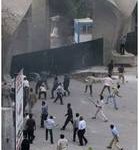
 Posted in
Posted in 